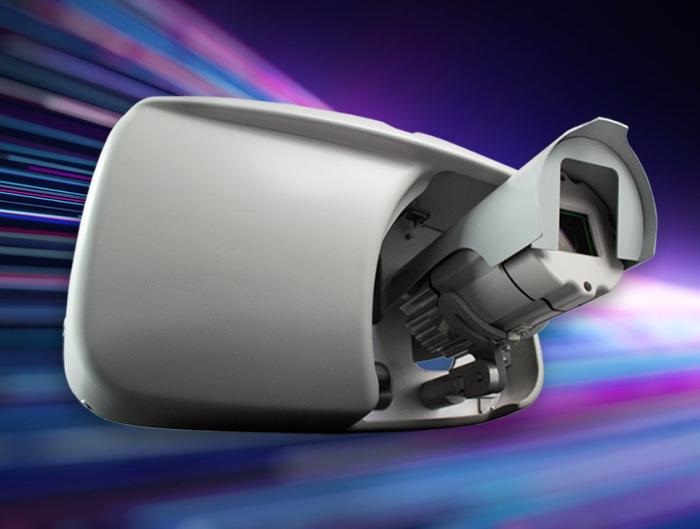
A vast array of new products and systems for aiding road safety were displayed at the ITS World Congress in October. David Crawford assesses a selection of safety initiatives exhibited in Orlando
Vital roles for ITS applications in road traffic safety emerge clearly from a new report from the US Transportation Safety Advancement Group. The report has been carried out for the Next Generation 911 What's Next Forum, which is preparing the way for future development of the US national 911 emergency single call phone number.Key areas identified for further work include traffic incident management during emergencies (by giving greater priority and communications support to responders, for example) and work zone management (by giving more effective warnings of emergency vehicles). Fresh approaches to these issues featured strongly among plentiful evidence of new thinking on show at the 2011
Work zone safety has a high priority in the US where annually some 800 people lose their lives and 37,000 more incur injuries in highway construction related accidents. To tackle one specific issue, webcam technology specialist
The EarthCam system can now generate alerts based on gap analysis. It produces a dynamic multi-lane visualisation of a roadway project, with the user interface showing archived as well as live information on speed, traffic density and volume by vehicle class for up to 10 lanes. It allows the setting of specified software parameters to warn traffic operation centres and to update NTCIP compliant dynamic message signs for alerting drivers to changing flow conditions. Departments of transportation also have an option to tie into social media, such as Facebook and Twitter, to share safety information with travellers.
Traffic data specialist GEWI and German vehicle manufacturer
Canadian company
Roadway condition is another important factor in traffic safety. Working with machine vision developer
Equipped front and rear with AVT's
By combining geographic information system data, satellite-based positioning and digital camera imaging, the SSMC image data collection system collects information on safety critical roadway and pavement features such as potholes, rutting and longitudinal, transverse and edge cracking. With a data rate of 125 Mbytes per second, the company sees its solution offering a less labour intensive approach than that of conventional manual surveys, allowing electronic data storage for future referencing.
Detection and communications
A new version of radar-based iControl fromCalifornia based US highway and intersection management specialist
The new device is designed to detect bicycles and to differentiate between these and other vehicles, while reducing hardware and costs in comparison to magnetic sensors.
Sensys Networks has also introduced an access point controller card to bring the processing of data from its sensors into traffic controller cabinets, allowing a doubling of the number of sensors that can be controlled. "A common thread across all applications is accurate, reliable detection,"says Sensys Networks director of product management Michael Volling.
Another California based company, traffic management specialist
The all-in-one vehicle detection product combines video and radar sources to deliver a wider range of intersection sensing, including stop-bar and advanced zone detection. Communication from roadside cabinets is by standard Wi-Fi connectivity and a robust graphical user interface aids straightforward radar set up.
Shipments are expected to begin in the first quarter of 2012.
Houston Radar launched its PD300 FMCW 'milli-power' OEM radar designed for on-road presence indication, volume and occupancy measurements across up to six lanes. This simultaneous target tracking and distance measuring device is claimed to deliver target distance measurement at unprecedented resolution.
With power consumption of 0.18W and measuring 51m by 51mm by 13mm, the PD300 OEM radar is aimed specifically at solar and battery powered applications, for permanent or temporary installations.
Video networking solutions provider
Impath Networks marketing and sales vice president Leo Gaessler says: "It's important that transportation agencies are able to both view and record video surveillance and then disseminate the video to interested parties - whether it's a control centre, a local authority or a public website."
Digital radio specialist Harris Public Safety & Professional Communications highlighted the role of its linear simulcast technology in responding to one aspect of the super outbreak - communications between public safety agencies. The company stressed the flexibility of its P25IP system, which allowed users to switch between talk groups and make direct calls from user to user, enabling faster reactions by first responders as radio traffic increased by up to five times normal levels.
Connected vehicles
Connected vehicle technology systems, using 5.9 GHz DSRC (dedicated short range communications), offer huge potential for improving traffic safety - notably by helping drivers to avoid crashes.Research and testing is currently under way in the US in support of a decision by the NHTSA, expected by 2013, that could mandate the installation of the necessary equipment in all new light vehicles.
A parallel decision on trucks is due in 2014. Part of the research involves a 'safety pilot' programme deploying up to 3,000 vehicles and a series of driver clinics around the US, where participants can experience the technology in a controlled environment. A foretaste of the potential of connected vehicles technology took place alongside the ITS World Congress, with delegates able to experience system demonstrations running on the nearby Walt Disney World Speedway.
Data from one such exercise by a 20 year partnership between traffic control specialist Econolite and detection system developer Image Sensing Systems was also made available to the Orange County Traffic Management Center.
Another joint demonstration, this time by automotive technology developer Denso and Econolite, showed how connected vehicle technology can be used to influence safe movement of traffic through networks of signalised intersections; for example, by enabling coordinated operation of traffic signals and advance crash avoidance technologies.
RSS












